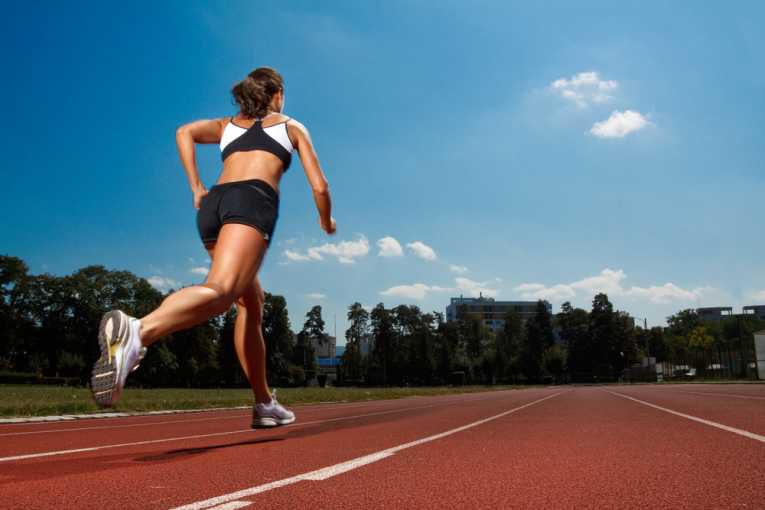Biomedical engineers Dr. Gregory Sawicki and Dr. Dominic Farris have looked at the relationship between the gastrocnemius muscle and the Achilles tendon. The North Carolina State University research in Proceedings of the National Academy of Sciences has revealed a surprising clutch-like mechanism that conserves energy in our locomotion. It means that when we walk fast, like a hip-swivelling Olympic athlete, then we are limiting our range. The ancestral human runner could get further and hunt more prey organisms if he got up on his tippy toes and ran with it.
Around 2 m/sec or 4.5 mph, we can comfortably run long distances if necessary like the original Marathon messenger, Phidippides. Well maybe he wasn't so comforted. Attaching a tiny ultrasound probe and measuring force by means of a treadmill, the changes in the back of the calf were recorded with high speed motion capture.
It showed the medial gastrocnemius engages early in a running stride and holds the Achilles like a clutch. Then it stretches the Achilles tendon before releasing the pent-up energy in a rapid recoil. An ancient myth of "Spring-heeled Jack" comes to mind.

This was a famed Barcelona event, showing the heel placement necessary to avoid being disqualified for running! via Shutterstock
The faster we walk, the faster the calf muscle shortens then relaxes in normal muscle activity. At high speed walking, however, the power produced is less and less, compared to the effort put in because "the muscle can't catch up to the speed of the gait as you walk faster and faster", reports Gregory Sawicki. "But when you shift the gait and transition from a walk to a run, that same muscle becomes almost static and doesn't seem to change its behaviour very much as you run faster and faster, although we didn't test the muscle at sprinting rates." He is obviously a jogger!
Implications of the enlightening research include prosthetics or conditioning and strengthening the legs of sport professionals. While previous studies have concentrated on computer models, this research has indicated human evolutionary potential gained from running and provided insight into the in vivo situation of people who run at relatively low speeds. Next up, Usain Bolt.










